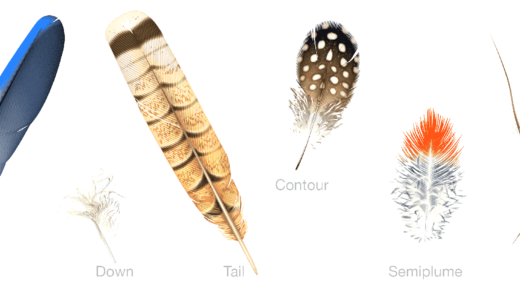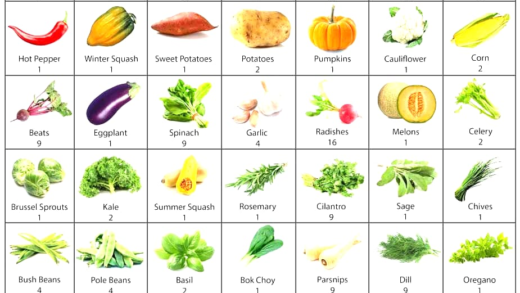Automotive glass is crucial for vehicle safety and performance. Different types include windshields, side windows, and sunroofs, each serving unique functions. Signs for replacement include cracks, distortion, and leaks. Laminated glass offers benefits like shatter resistance and UV protection. Temperature impacts performance, affecting expansion and resistance to impacts.
What is Automotive Glass
Automotive glass refers to the specialized glass used in vehicles, including windshields, side windows, and rear windows. This type of glass is made from unique materials that provide strength, clarity, and safety. Unlike regular glass, automotive glass undergoes specific manufacturing processes to enhance its durability and impact resistance.
Automotive glass is primarily composed of laminated and tempered glass, which are designed to withstand varying temperatures and impacts. Laminated glass consists of two layers of glass with a plastic interlayer, providing additional strength and reducing shattering. Tempered glass is heat-treated to increase its strength and is commonly used for side and rear windows. Together, these materials ensure that automotive glass meets safety standards and provides clear visibility for drivers.
Key Materials Used in Automotive Glass
The strength and safety of automotive glass depend significantly on the materials used in its production. The two primary materials are:
- Laminated Glass: This type consists of two glass layers bonded together by a polyvinyl butyral (PVB) interlayer. This construction not only enhances strength but also minimizes the risk of shattering upon impact.
- Tempered Glass: Made from regular glass that is heated and rapidly cooled, tempered glass is much stronger than standard glass. It is designed to shatter into small, less harmful pieces, reducing injury risks in accidents.
In addition to these materials, coatings and treatments can be applied to automotive glass to improve properties such as UV resistance and glare reduction, making driving safer and more comfortable.
How Automotive Glass Differs from Regular Glass
Automotive glass is distinctly different from regular glass due to its manufacturing processes and safety features. Here are the main differences:
- Strength: Automotive glass is engineered to withstand significant impact forces, making it far more resilient than standard glass.
- Safety: The use of laminated glass in windshields prevents shattering, while tempered glass breaks into small pieces, reducing the likelihood of injury.
- Manufacturing Process: Automotive glass undergoes rigorous testing and treatments that regular glass does not, ensuring it meets safety standards set by automotive regulations.
- Temperature Resistance: Automotive glass is designed to handle extreme temperature changes without compromising its structural integrity, unlike regular glass, which can crack under stress.
Understanding these differences helps consumers appreciate the importance of automotive glass in vehicle safety and performance.
The Manufacturing Process of Automotive Glass
The manufacturing process of automotive glass is a precise and intricate procedure designed to ensure safety and durability. It involves several key steps:
- Raw Material Preparation: The process begins with selecting high-quality silica sand, soda ash, and limestone. These materials are melted in a furnace at extremely high temperatures, reaching around 1,700 degrees Celsius.
- Molding: Once melted, the glass is shaped using molds that create the desired dimensions for windshields or side windows. This step is crucial for achieving the correct fit in vehicles.
- Annealing: After molding, the glass must be cooled slowly in a controlled environment. This annealing process helps relieve internal stresses, ensuring the glass remains strong and stable.
- Coating and Treatments: Next, various coatings are applied to enhance properties such as UV resistance, glare reduction, and anti-fogging. These treatments improve visibility and comfort for drivers.
- Quality Testing: Finally, each piece of automotive glass undergoes rigorous testing for strength, clarity, and safety. This ensures compliance with automotive safety standards.
This comprehensive manufacturing process is what sets automotive glass apart from regular glass, providing the necessary strength and safety features for vehicles.
Impact Resistance: How Automotive Glass Prevents Shattering
Impact resistance is a critical feature of automotive glass that ensures safety during accidents. Automotive glass is specifically designed to withstand significant impacts without shattering. Here’s how it works:
- Laminated Glass Structure: Laminated automotive glass consists of two layers of glass bonded by a durable plastic interlayer. This design not only enhances strength but also keeps the glass intact during impacts, reducing the risk of injury from flying shards.
- Tempered Glass Properties: Tempered glass is another vital component. Its manufacturing process involves heating and rapidly cooling the glass, which increases its strength. In case of breakage, tempered glass shatters into small, blunt pieces, minimizing harm to passengers.
- Testing Standards: Automotive glass undergoes various impact tests to ensure it meets safety standards. These tests simulate real-life conditions, ensuring that the glass can handle the forces it might encounter on the road.
Ultimately, the impact resistance of automotive glass significantly contributes to vehicle safety, protecting passengers and drivers alike.
Safety Features of Automotive Glass
Automotive glass is equipped with several safety features that enhance the overall safety of vehicles. These features are essential for protecting occupants during accidents and include:
- Shatter Resistance: As previously mentioned, laminated glass prevents shattering and keeps the glass intact, which is vital during collisions.
- UV Protection: Many automotive glass products have UV-blocking coatings that protect occupants from harmful ultraviolet rays, reducing skin damage and heat inside the vehicle.
- Enhanced Visibility: The clarity of automotive glass allows for optimal visibility, which is crucial for safe driving. Special coatings also help reduce glare from sunlight and headlights.
- Sound Insulation: Laminated glass provides better sound insulation compared to regular glass, creating a quieter cabin environment for drivers and passengers.
These safety features make automotive glass an integral part of vehicle design, significantly enhancing passenger safety and comfort.
Common Types of Automotive Glass
Automotive glass comes in various types, each serving specific functions and safety features. Understanding these types helps in recognizing their importance in vehicle design and safety. The main types include:
- Windshields: These are the front windows of vehicles, typically made from laminated glass for shatter resistance and safety.
- Side Windows: Often made from tempered glass, side windows are designed to break into small pieces, minimizing injury risks in case of accidents.
- Rear Windows: Similar to side windows, rear windows are generally made from tempered glass, providing visibility and safety.
- Sunroofs: These are glass panels in the roof of the vehicle, often made from laminated glass to enhance strength and UV protection.
- Quarter Glass: Found at the rear sides of vehicles, this glass is typically made from tempered glass, providing structural support and visibility.
Each type of automotive glass plays a crucial role in vehicle safety, visibility, and structural integrity.
Signs Your Automotive Glass Needs Replacement
Recognizing when automotive glass needs replacement is crucial for maintaining vehicle safety. Common signs include:
- Cracks or Chips: Any visible damage, such as cracks or chips, can compromise the integrity of the glass and may require immediate replacement.
- Distortion: If the glass appears warped or distorted, it can affect visibility and should be replaced.
- Water Leaks: Signs of leaking water during rain can indicate that the seal around the glass is damaged and replacement may be necessary.
- Increased Noise: If you notice increased wind noise while driving, it may suggest that the glass is not sealed properly and should be inspected.
- Fogging: Persistent fogging between glass layers indicates a seal failure, warranting replacement.
Addressing these signs promptly can enhance safety and prevent further damage to the vehicle.
Benefits of Laminated Automotive Glass
Laminated automotive glass offers numerous advantages that enhance vehicle safety and performance:
- Shatter Resistance: The dual-layer structure of laminated glass prevents shattering, ensuring the glass remains intact during impacts.
- UV Protection: Laminated glass often includes UV-blocking properties, protecting occupants from harmful rays.
- Noise Reduction: The interlayer in laminated glass provides better sound insulation, creating a quieter cabin experience.
- Enhanced Visibility: Laminated glass ensures clarity, improving overall visibility for drivers and reducing glare.
- Structural Integrity: This type of glass contributes to the overall structural integrity of the vehicle, adding to safety in collisions.
These benefits make laminated glass an ideal choice for enhancing vehicle safety and comfort.
Temperature Effects on Automotive Glass Performance
Temperature can significantly impact the performance of automotive glass. Key effects include:
- Thermal Expansion: Automotive glass expands and contracts with temperature changes. Properly manufactured glass can handle these changes without cracking.
- Impact Resistance: Extreme temperatures can affect the glass’s ability to withstand impacts. Tempered glass is especially designed to resist these stresses.
- UV Degradation: Prolonged exposure to UV rays can weaken the glass over time, making it essential to use high-quality materials that resist UV damage.
- Condensation Issues: Temperature fluctuations can lead to condensation, affecting visibility and potentially damaging the seals.
- Safety Standards Compliance: Automotive glass must meet specific safety standards that account for temperature effects, ensuring reliability in varying climates.
Understanding these temperature effects helps in maintaining automotive glass and ensuring its effectiveness over time.





Comments are closed.